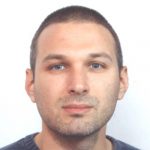
The research group uses three laboratories:
In these laboratories, the research group has access to various non-capital equipment such as instruments for: measuring the strength of electric and magnetic low-frequency fields, geoelectrical soil sounding, measuring the grounding resistance of relatively small grounding systems, measuring the quality of electrical energy, testing dielectric strength, thermal imaging camera, and similar equipment.
In the upcoming one-year period, the following is planned: In the development of the harmonic and transient model of the grounding system, work is planned on optimizing the sampling of frequency samples used for calculations, with the aim of accelerating computations while maintaining the same level of accuracy. For this purpose, a preliminary review of available modern optimization tools will be conducted, followed by a thorough feasibility analysis of using individual tools for the specified issue. In parallel with this analysis, complementary research will be carried out to improve the numerical-analytical procedure for transformation between the time and frequency domains. Furthermore, an analysis is planned to assess the justification for introducing frequency-dependent soil parameters into the grounding model, and depending on the results of this analysis, the model itself will be further improved.